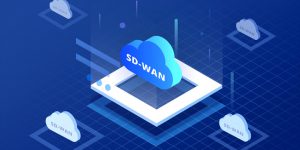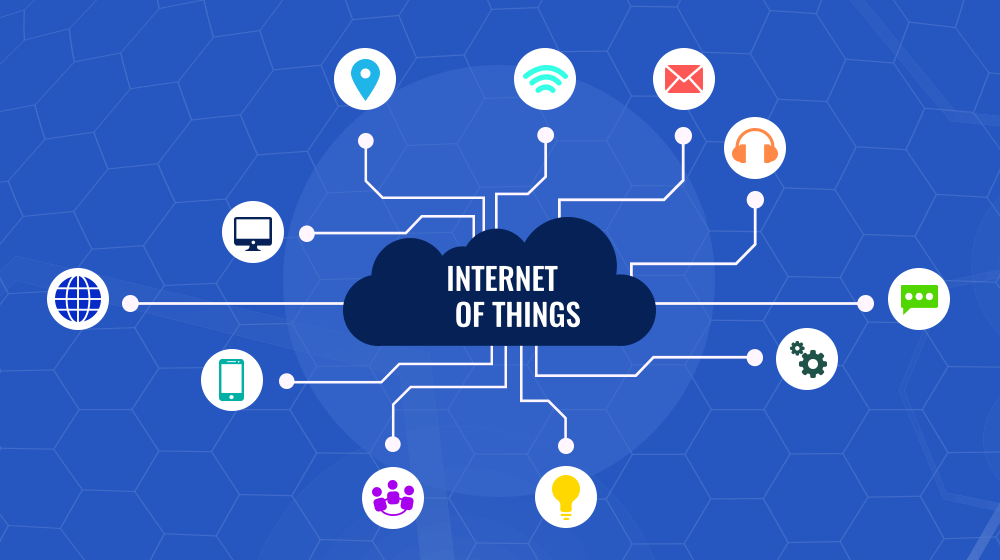
Internet of Things is a growing topic of conversation for many people both inside and outside the working place. IoT has got a lot of power as it can affect our lifestyle, the way we live and work. IoT includes a huge network of devices which are connected to the Internet. Devices include smartphones, tables, etc. It also includes the products that work on with a sensor. All these devices helps in collecting and exchanging data. IoT is thus a giant network of various connected things. It depicts the relation between People-People, Things- Things and also People-Things.
IoT technology has made it name amongst the great market leaders like Apple and Google, but it has also focused on introducing the ways and creating the applications which can help improving the life of the people with smart offices and homes. Majority of the companies have now started accepting and driving the Internet of Things. IoT has brought a revolution in the world. The Trending technologies of IoT to keep an eye on are as follows:
Internet of Things, popularly known as IoT, is in everything (almost everything) today, from your smartwatches to cooling systems. This newest technology has revolutionized the way you do things. Almost every industry today uses IoT to stay ahead in the game.
IoT applications are having a profound impact on the capabilities of computers in the modern digital environment. The Internet of Things allows for the direct integration of the physical world into computerized systems. This, in turn, leads to increases in productivity, efficiency, economic advantages, and a reduction in the amount of effort that needs to be put in by humans. IoT technology has revolutionized almost every industry, from healthcare to automobiles. It is the driving force behind the development of smart homes, smart cities, smart healthcare systems, and so on.
Let’s dive in…
Table of Contents
- What exactly is the IoT?
- IoT Devices: How Do They Operate??
- Advantages of Using IoT
- Top 10 Applications of the Internet of Things in 2024
What exactly is the IoT?
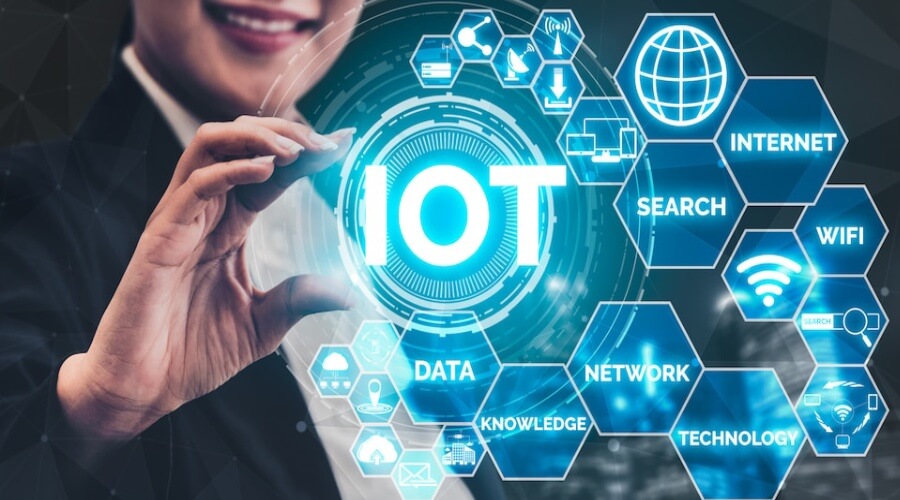
The “Internet of Things” refers to the infrastructure that enables various embedded devices, such as car sensors, wearables, etc., to communicate with one another, collect data from one another, and then share that data with the world at large. This newest technology is capable of interacting with one another in the same way that humans do. The Internet of Things allows for the safe integration of the physical world and computer systems by allowing remote activation and control of devices over an Internet network infrastructure. The Internet of Things (IoT) is revolutionizing every aspect of modern life.
The IoT can be used in anything, from simple home appliances to complex machinery. Without the need for human intervention, data can be transmitted from any individual IoT device that has been assigned a Unique Identifier (UID).
Smart home security cameras, connected automobiles equipped with sensors to determine fuel pressure, tyre pressure, or other issues, or any other equipment with sensors that can collect and transmit data via the Internet are all examples of the Internet of Things.
The Internet of Things offers numerous benefits, such as increased efficiency, streamlined business processes, improved health and safety, and so on. IoT makes virtually everything “smart” by leveraging data collection, AI (Artificial Intelligence) algorithms, and networking.
IoT Devices: How Do They Operate?
Each IoT device serves a unique purpose; however, they all operate in remarkably similar ways. Internet of Things (IoT) devices are tangible objects that gather data from the real world. A sensor, an actuator, and a processor are the three components that make up an Internet of Things device. Each of these components has a hardware board, as well as software systems, online APIs, and protocols that come together to build a network of embedded systems. For online operation, it also needs a unique IP address.
The data collected by sensors on IoT devices can be shared between devices in the network by connecting them to a gateway or an edge device. After that, the data is either examined locally or uploaded to a cloud service. Some of these gadgets are able to exchange data with one another and act on the results of those conversations.
Although humans interact with the devices in various ways (to set them up, provide instructions, or get the data), the devices carry out the bulk of the job independently.
The Internet of Things also makes use of artificial intelligence and machine learning to streamline the processes involved in data collection.
Advantages of Using IoT
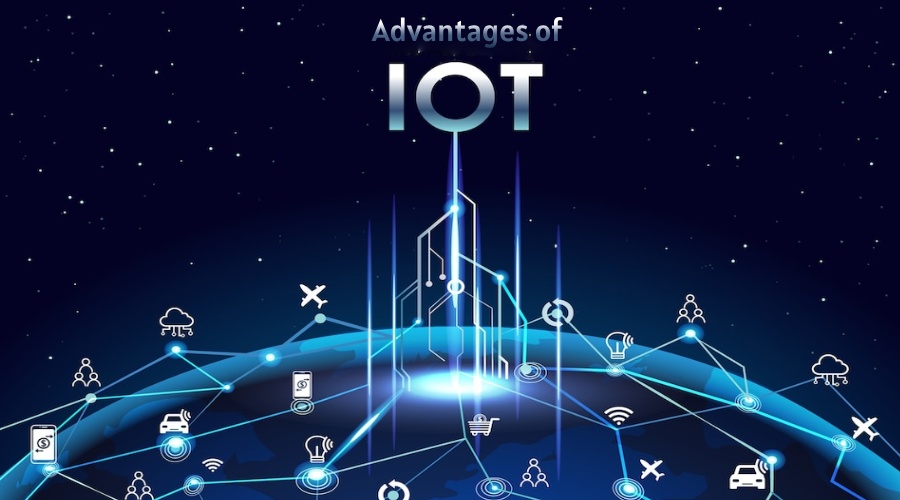
The Internet of Things (IoT) offers a wide variety of advantages, some of which are as follows
- People who have access to the Internet of Things are able to work more efficiently. They can manage their lives more effectively.
- The Internet of Things can be utilized to streamline business operations.
- Companies can utilize IoT to acquire real-time, in-depth insights into anything from the functioning of their machines to the operations of their supply chains and logistics systems.
- IoT can be used to enhance service delivery, resulting in decreased costs associated with the production and distribution of items.
- Businesses can utilize the Internet of Things to conduct their operation and improve their strategies to get better outcomes.
- Businesses can offer improved services to their customers while simultaneously reducing the amount of human labour that is required by automating some operations using IoT.
- The Internet of Things system enables prompt action to be taken in response to data.
- Using IoT, you may identify issues and make improvements to processes to provide a better experience for customers.
- The Internet of Things makes it possible for an organization’s access control system to offer an increased level of protection to the broader public as well.
- The Internet of Things (IoT) can assist an organization in identifying any suspicious activity and raise its level of security if it is used in surveillance.
Also Read: Explore the IoT advantages and disadvantages in modern era
In this post, we will walk you through the top 10 applications of the Internet of Things.
Top 10 Applications of the Internet of Things in 2024
1. Use of IoT in Smart Homes
Smart homes are in the mainstream today. People from all walks of life dream of a smart home. The residential real estate sector is already experiencing a shift brought on by smart homes. But what exactly does it imply when people talk about having a “Smart Home”? Imagine a home where you could switch off the lights even after leaving your home.
With the Internet of Things, it is possible. The Internet of Things is making your life simpler and more convenient. It is anticipated that smart houses will become as prevalent as smartphones in the near future. They are being promoted as being useful, productive, and economical in their approach. One example of this is “Smart Lighting,” which can automatically adapt itself based on the preferences of the user as well as the external ambient lighting.
2. Use of IoT in Automobile
The automobile industry is already busy producing automated cars. Many big brands, including Tesla Inc., General Motors, Ford, etc., are already developing autonomous vehicles. And all this because of the Internet of Things. Nearly all of the major automotive manufacturers, including Tesla, BMW, Ford, and others, are currently working on the next major innovation in the automotive industry.
IoT has caused the automotive industry to undergo a significant paradigm shift. Because of its introduction, the vehicle has undergone a number of significant transformations, some of which include enhanced levels of safety as well as comfort and elegance. A person can experience the same level of connectivity, entertainment, and network while driving a connected car as they do when they are at their job, their home, or an entertainment centre.
This technology can give the user a number of benefits, some of which include in-car entertainment, fuel efficiency, enhanced navigation, maintenance features, telematics, and fleet management.
Moreover, Internet of Things (IoT) sensors that are integrated into the exterior of automobiles help prevent accidents and make driving more secure and comfortable. Using the newest technologies, including AI, drivers are able to receive real-time warnings about potential hazards like head-on collisions and driving conditions.
3. Use of IoT in Smart Cities
Applications of the Internet of Things are pretty popular among smart cities. The concept of Smart Cities is creating a lot of excitement among people worldwide. One of the many components that go into making a city “smart” is an improved traffic infrastructure.
The Internet of Things is implemented in numerous ways in smart cities, including smart surveillance, urban security, smart street lighting, smart parking systems, smart energy management, water management, waste management, and automated transportation, environmental monitoring, amongst other applications. The IoT can help people resolve key issues such as pollution, transportation congestion, and energy shortages.
4. Use of IoT in Industries
The industrial sector is one of the most prominent users of the Internet of Things. The Internet of Things is a game-changer because it offers solutions to almost every sector, including the industrial sector. Effective and masterful equipment, data analysis software, sensors, and tracking devices are at the heart of IoT applications, which focus on advancing the sector and its working ways. These contribute to a company’s efficiency and effectiveness.
The Internet of Things not only facilitates progress but also enables targeted repair via the identification of problem areas. The Internet of Things can be paired with automation and machine learning. It enables businesses to cut their operational expenses while simultaneously increasing their production and efficiency. With the use of IoT, products, and packaging can be revamped to provide better functionality in terms of price and customer satisfaction.
The Internet of Things can be put to use in almost everything, including manufacturing, inventory management, packaging, quality control, logistics, supply chain management, quality analysis, and so on.
It can be used to monitor the effectiveness of the systems, identify any defects in the machinery, determine the factors that contribute to inefficiency, manage unscheduled downtime, and so on.
5. Use of IoT in Smart Grid
The smart grid has emerged as the most important among the many large-scale civil Internet of Things applications. Smart grids, aided by the Internet of Things technology, may provide robust and efficient energy management solutions; however, current models and frameworks are unable to provide this. Putting up “smart” energy meters with built-in sensors and IoT technologies can make it easier to track and manage power usage everywhere, from major substations to residential areas. Power outages can be avoided, and electricity can be distributed more quickly to people who need it thanks to a smart grid’s ability to detect energy spikes and equipment breakdowns.
In addition, the system provides the end user with useful information about their consumption habits and recommendations for how to reduce or otherwise alter energy expenditures.
6. Use of IoT in Healthcare Industry
The Internet of Things has the potential to have a positive impact on the healthcare industry as a whole. The Internet of Things (IoT) has become an extremely helpful resource for the healthcare industry. Patients, doctors, hospitals, and health insurance firms are all benefitted from this newest technology.
Today, patients have access to a variety of wearable gadgets, like fitness bands and blood pressure monitors. IoT devices can help people take better care of themselves by giving them automated alerts when certain conditions are detected. In addition, doctors and nurses can provide better care for high-risk patients than ever before.
The Internet of Things device also makes it simple for doctors to search the patient’s medical history and gain access to up-to-date health information. Even malignant cells can be tracked utilizing Internet of Things technologies that are based on nanotechnology.
Another application for the Internet of Things technology is the creation of smart beds equipped with specialized sensors to monitor vital indicators such as blood pressure, oximeters, and the temperature of the body. The IoT enables hospitals to keep tabs on important medical equipment like wheelchairs and defibrillators. Additionally, they can manage inventory, monitor the environment, and control the temperature using IoT technology.
7. Use of IoT in Retail Establishments
These days, the use of the Internet of Things (IoT) in retail companies is becoming increasingly common. Customers can have a whole new and improved shopping experience as a result of the use of IoT applications in retail establishments. The Internet of Things opens up new lines of communication with customers.
It presents new chances to enhance the whole shopping experience. With the assistance of IoT applications, in-store checkout procedures might be sped up and made more straightforward.
The RFID (Radio Frequency Identification) checkout system recognizes tags on products and deducts the total amount from a client’s application. This saves the customer time and the annoyance of having to wait in enormous queues. Additionally, business owners can stay in touch with their customers even when those customers are not physically present in the store. They can utilize IoT to deliver superior customer care to their customers.
8. Use of IoT in Supply Chain Management
Applications based on the Internet of Things are utilized extensively in supply chains. Suppliers have been able to monitor items while they are in transit and receive quick feedback from customers as a result of the implementation of a rating system.
IoT systems are also able to provide information about the temperature and pressure at which objects are being stored, which can assist the provider or the driver in maintaining the goods while they are in transit. Customers are able to monitor both the current status of the supply network as well as a thorough perspective of it thanks to the Internet of Things.
9. Use of IoT in Farming
When it comes to the applications of the Internet of Things, farming is one of the sectors that benefitted from it. Farmers are already making use of this cutting-edge technology to obtain access to data and make informed decisions.
The Internet of Things devices provide farmers with access to specific information on the characteristics of their soil, such as its moisture, acidity, nutrient concentration, temperature, and so on, which is critical for the growth of healthy crops.
In addition, it enables farmers to cut waste while also increasing their productivity. Farmers can use the data to plan irrigation, ensure optimal water usage, determine the ideal time to plant, and even diagnose soil and plant diseases.
Aside from that, IoT devices can be used to collect and analyze data pertaining to the weather and climate. In addition, farmers can use the Internet of Things devices to manage inventories, manage fields, and keep track of their fleets and livestock.
10. Use of IoT in Travel and Hospitality
The application of IoT is pretty common in the travel and tourism industry. The Internet of Things offers tremendous benefits to the tourism and hospitality industries. Since the Internet of Things provides several important advantages for hotels, many in the hospitality industry have already used the technology.
These advantages might range from helping businesses reduce their energy bills to providing happier clients with superior service. Inns and motels can save a lot of money on labour costs by using the Internet of Things to automate some of their processes.
Hotel guests may provide helpful feedback, order room service, and report problems like a lack of towels directly from their rooms using their smartphones. Aside from that, mobile electronic keys allow hotel customers to do away with the front desk altogether. Internet of Things technology can help hotel operators better accommodate their visitors, provide a more tailored stay, and cut down on unnecessary wait times.
Also Read: Internet Of Things [IoT] Examples in Progressive Era
The Bottom Line
Undoubtedly, the Internet of Things has already made the future a reality! The application of the Internet of Things is everywhere, from our wearable gadgets to smart homes. This newest technology has significantly altered the way we live and work. The Internet of Things (IoT) has emerged as one of the most essential technologies of the 21st century. It has simplified the process of embedding internet connectivity into everyday objects like refrigerators, microwaves, and smartwatches. It is now possible for people, processes, and things to communicate without hindrance. It has made it easy to get information from a wide variety of physical objects with minimal involvement from people. Both the physical and virtual worlds can collaborate and exchange information with one another using the Internet of Things.
So, if you’re looking for ways to improve operational efficiency, increase productivity, and enrich the customer experience, the Internet of Things is the solution.

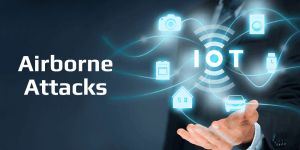
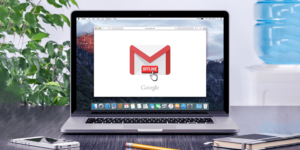
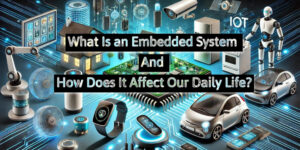

![Internet Of Things Technology Examples - WeeTech Solution Pvt Ltd Internet Of Things [IoT] Examples](https://www.weetechsolution.com/wp-content/uploads/2023/10/Internet-Of-Things-Technology-Examples-300x150.jpg)
